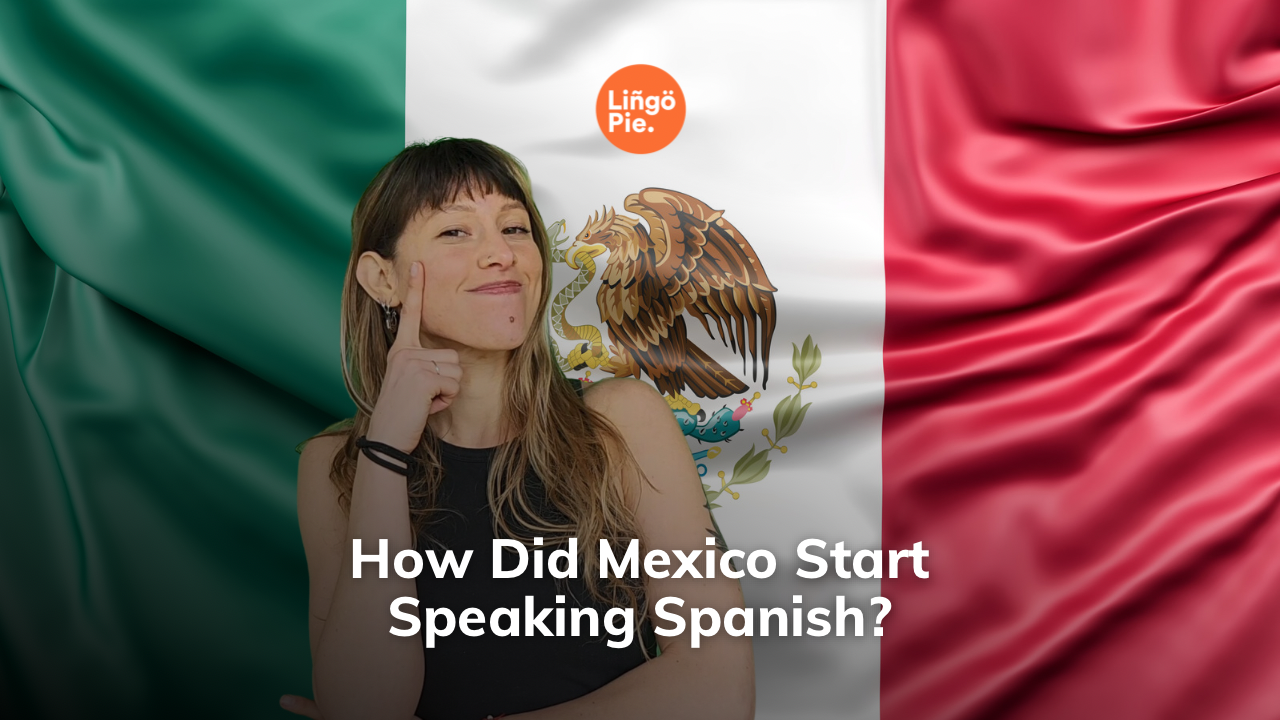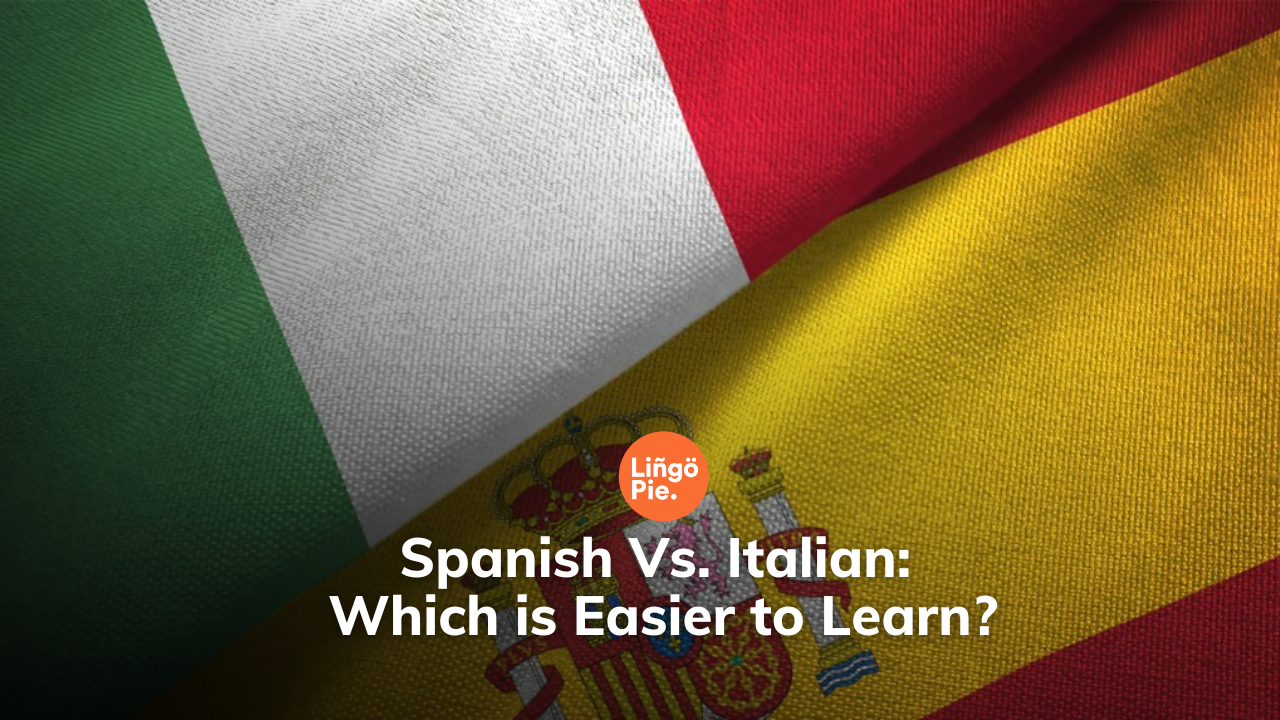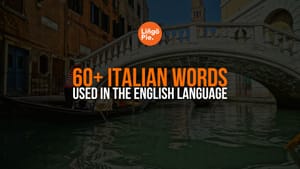Spanish and Italian, two popular Romance languages, hold a special allure for language enthusiasts around the world. After all, they are both widely spoken and rich in cultural heritage.
Many prospective language learners find themselves facing a dilemma when choosing between Learning Spanish and Learning Italian, and both languages offer a lot of advantages with few drawbacks, making them popular choices.
In this guide, we are here to compare these two linguistic gems, considering aspects like pronunciation, vocabulary, and grammatical similarities.
Our goal is to help you decide which language might be easier for you to learn and embark on your language-learning journey with confidence.
Table of Contents
- Spanish vs Italian - 4 Core Similarities and Differences
- Why Are Spanish and Italian Similar?
- Spanish vs Italian Vocabulary
- Grammatical differences
- Italian vs. Spanish: Which one should you learn?
- Map of Italian and Spanish Speakers Around the World
- Historical Differences
- FAQs
- Summing Up - Spanish Vs. Italian: Which is Easier to Learn?
Spanish vs Italian - Four Core Similarities

Spanish and Italian, both members of the Romance language family, share a linguistic heritage that dates back to the Roman Empire.
These two languages are known for their melodic and expressive qualities, but they also have distinct characteristics that set them apart.
In this comparison, we will explore four core similarities and four key differences between Spanish and Italian, shedding light on the intricacies of their linguistic connection.
Same Language Family
Spanish and Italian both belong to the Romance language family, which evolved from Vulgar Latin.
This common linguistic ancestry means they share foundational features such as verb conjugation, noun gender, and sentence structure.
Romantic Pronunciation
When it comes to pronunciation, Spanish and Italian exhibit remarkable similarities. As Romance Languages, they are renowned for their melodious and clear enunciation.
Both languages have relatively straightforward phonetics, making them accessible to learners seeking languages with consistent pronunciation rules.
Read Also:

Vocabulary Similarities and Cognates
Due to their shared Latin origin, Spanish and Italian have a significant number of cognates or words with similar meanings and forms.
This overlap in vocabulary can be a valuable asset for language learners, as it eases the process of acquiring new words.
Grammatical Structure
Spanish and Italian employ a subject-verb-object (SVO) word order, similar to English.
This grammatical structure provides a sense of familiarity for native English speakers, making it easier to construct sentences in both languages.
Spanish vs Italian - Four Core Differences
Despite the similarities highlighted so far, there are also many nuances and marked differences between Spanish and Italian. We've elaborated on these below.
Pronunciation Nuances
While Spanish and Italian share general pronunciation rules, there are subtle differences in accent and phonetics.
For instance, Italian is known for its soft "c" and distinctive vowel sounds, which might present challenges for Spanish speakers accustomed to the more straightforward Spanish phonetics.
Verb Conjugation Complexity
Spanish verb conjugation, though relatively simpler compared to some other Romance languages, can still be intricate for beginners.
Italian, on the other hand, has a reputation for more extensive verb conjugation, with variations based on tense, mood, and person.
Lexical Differences
Although Spanish and Italian have a wealth of vocabulary in common, they also have distinct words and expressions that reflect their unique cultural and historical influences.
This means that learners need to adapt to the specific vocabulary of each language.
Regional Variations
Both Spanish and Italian have numerous regional dialects and accents, which can introduce further complexity for learners.
Spanish, for instance, is spoken in Latin America and Spain, each with its own idiomatic expressions and pronunciation.
Italian has regional variations such as Tuscan and Sicilian, which may require some adjustment when navigating different parts of Italy.
Understanding these core similarities and differences can help prospective learners make an informed choice between Spanish and Italian based on their language learning goals and preferences.
Why Are Spanish and Italian Similar?
As referenced previously, Italian and Spanish language share remarkable linguistic similarities due to their common origin as Romance languages, stemming from Vulgar Latin within the same language family.
This shared ancestry underpins their grammar, including noun gender and verb conjugation.
Their close proximity geographically within the Roman Empire and subsequent interaction between regions contributed to their lexical similarities and mutual intelligibility.
These factors, along with historical influences, have forged a strong connection, making Spanish and Italian two languages with a profound bond and numerous linguistic commonalities.
Spanish Vs. Italian Vocabulary

When it comes to vocabulary, the ease of learning can vary depending on your native language and prior language exposure.
For English speakers, Spanish vocabulary might feel more intuitive due to its straightforward pronunciation and a higher number of cognates.
Italian words, on the other hand, often feature unique vowel sounds and pronunciation nuances, which might be a bit more challenging for English speakers.
However, if you have exposure to other Romance languages, Italian vocabulary could be more accessible due to its similarities with other Latin-based languages, including Spanish.
Grammatical Differences
Spanish grammar is often considered simpler than Italian grammar due to its relatively straightforward conjugation rules and more consistent verb endings.
Spanish verbs tend to follow more predictable patterns, with fewer irregularities compared to Italian. In addition, Spanish maintains a formal written form, which is not as prevalent in Italian, making the language structure more standardized.
Moreover, Spanish sentence structure adheres to a subject-verb-object (SVO) order, which is akin to English, facilitating comprehension for native English speakers.
While both languages share common grammatical elements due to their Romance language heritage, Spanish's greater regularity in verb conjugation and sentence structure makes it generally more approachable for language learners.
Italian Vs. Spanish: Which one should you learn?
While both Italian and Spanish offer unique linguistic and cultural experiences, the choice of which one to learn first can depend on your location and goals.
If you reside in the United States, starting with Spanish may be advantageous due to the substantial Spanish-speaking population, especially in Latin America. Learning Spanish opens doors to effective communication and cultural understanding.
Conversely, if you live in Europe, Italian could be a more strategic choice, given its relevance in countries like Italy, Switzerland, and San Marino.
Regardless, both languages share a common Romance foundation, making the transition from one to the other smoother, so consider mastering both for a rich language-learning journey.
Related:



Map of Italian and Spanish Speakers Around the World

Spanish is widely spoken in a multitude of countries, primarily in Latin America and Spain. It is the official language in countries like Mexico, Colombia, Argentina, and Spain.
Italian, on the other hand, is primarily spoken in Italy, San Marino, and parts of Switzerland.

While both languages share similarities in pronunciation and have common words due to their Romance language roots, Spanish extends its influence across a broader geographical expanse, with over 20 countries where it's the official language.
Italian's influence, while significant, is more concentrated in the Italian Peninsula and select regions, where it maintains its distinct pronunciation and unique vocabulary.
Lingopie: Mastering Italian and Spanish through TV Shows

Weather you decide if Spanish or Italian is the language you want to learn, Lingopie is an innovative language learning platform that leverages the power of entertainment to make acquiring a new language, an enjoyable experience. By offering users access to a diverse selection of TV shows and movies in the target language, Lingopie allows learners to immerse themselves in authentic content while picking up vocabulary and cultural nuances. The interactive subtitles are a key feature, enabling users to click on words they don't understand for instant translations. This method not only makes learning languages like Italian and Spanish more engaging, but also helps users develop listening skills and contextual understanding, which are crucial for fluency.
See also:


Historical Differences
Historical differences between Italian and Spanish can be traced back to their development as distinct languages within the Romance language family.
Both languages evolved from Vulgar Latin, and while they retained many linguistic elements, they also diverged significantly. One key difference is in pronunciation.
Italian is known for its precise pronunciation, with relatively simple vowel sounds and soft consonants, while Spanish boasts a more melodic pronunciation with distinct vowel qualities.
Furthermore, the way verbs are conjugated is another historical distinction. Italian verbs tend to have more intricate conjugation patterns with variations based on tense, mood, and person, reflecting the language's evolution in regional Italian city-states.
These historical nuances give each language its unique charm and character.
Related:

FAQs: Spanish Vs Italian: Which is Easier to Learn?
In this section, we aim to address the most pressing questions and concerns that you might have when comparing Spanish and Italian for your language learning journey.
Can I learn Italian and Spanish pronunciation at the same time?
Learning Italian and Spanish pronunciation simultaneously is possible, but it can be challenging. It's advisable to focus on one language's pronunciation initially to avoid confusion and improve your proficiency.
Is it better to learn Italian or Spanish?
Whether it's better to learn Italian or Spanish depends on your goals and context. Spanish is more widely spoken, so consider where you'll use it most.
Related:

Is it harder to learn Italian or Spanish?
Both Italian and Spanish have their own challenges, but they share many common features. For an English speaker, learning either language may present similar difficulties. Your personal interest and exposure to the language can also impact how easy or hard it feels to learn.
Can a Spanish person understand an Italian person?
Spanish and Italian speakers can understand each other to some extent due to their shared Romance language roots, but full comprehension may be limited, particularly in complex discussions.
Where can I find Italian speakers online?
You can find Italian speakers online through language exchange websites, language learning apps, social media, or virtual language communities like Tandem or Speaky.
How different are Italian and Spanish?
Italian and Spanish share many linguistic similarities but also have distinct differences, particularly in pronunciation, vocabulary, and certain grammar aspects. These differences add unique flavors to each language.

Summing Up - Spanish Vs Italian: Which is Easier to Learn?
In summary, both Spanish and Italian are linguistically and culturally enriching languages, well worth your time and effort.
Whether you like the melodious sounds of Spanish or the poetic charm of Italian, both languages offer unique and valuable experiences.
If you're faced with the choice of which one to start with, we recommend embarking on your language learning journey with the Spanish language first.
It's wider global reach, particularly in the United States, Latin America, and Spain, provides ample opportunities for practice and application.
Once you feel confident in Spanish, delving into Italian will be a delightful and more accessible endeavor, building upon the foundation you've established.
Sign up to a free trial with Lingopie today and start your journey towards fluency in Spanish or Italian.







![How Many Italian-Speaking Countries Are Out There? [2025 Data]](/blog/content/images/size/w300/2025/06/Italian-speaking-countries.jpg)


